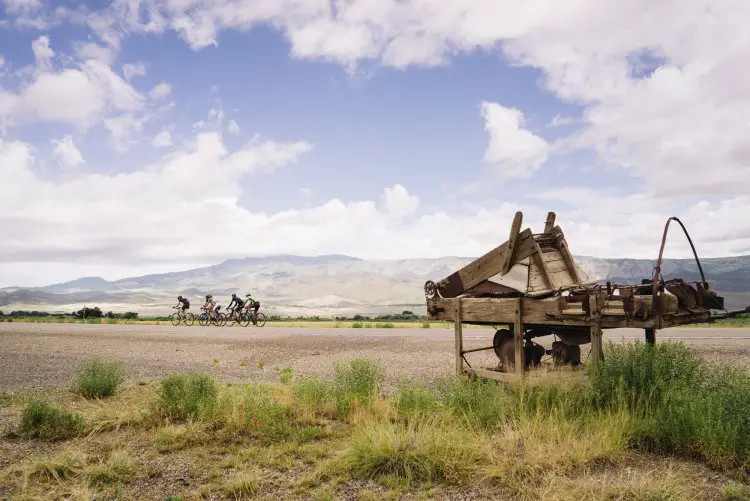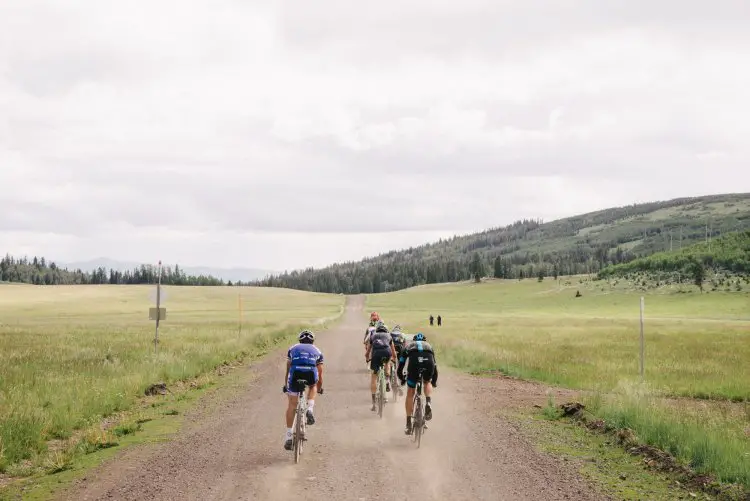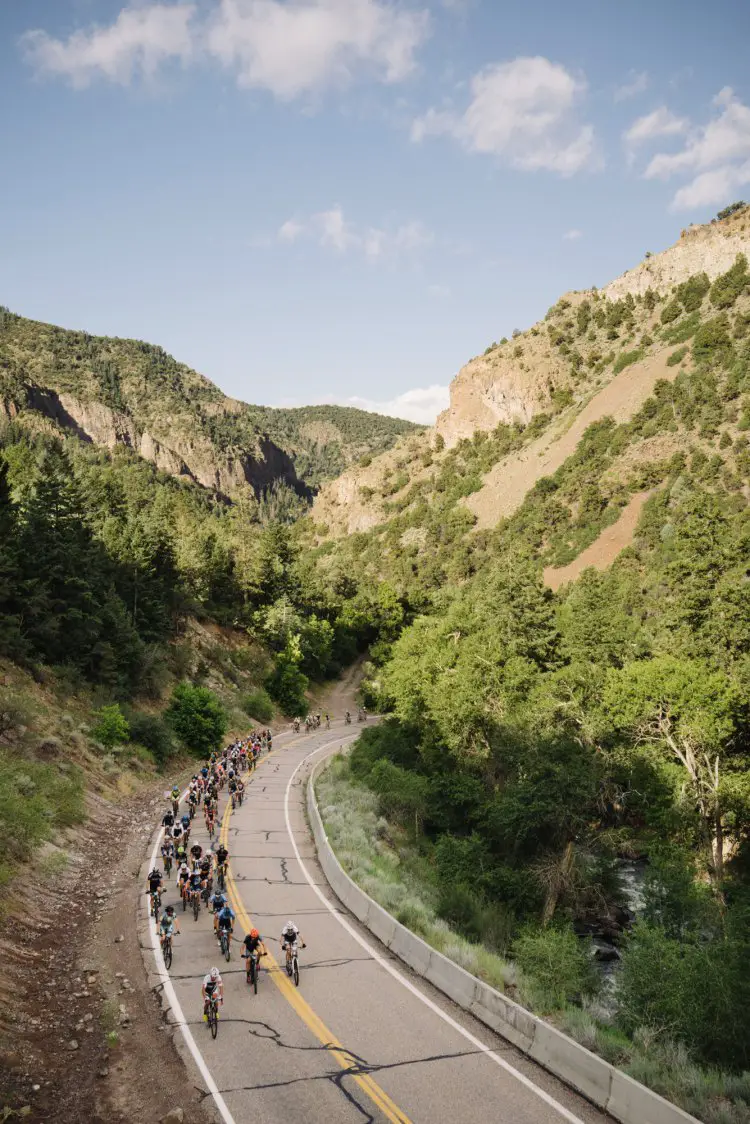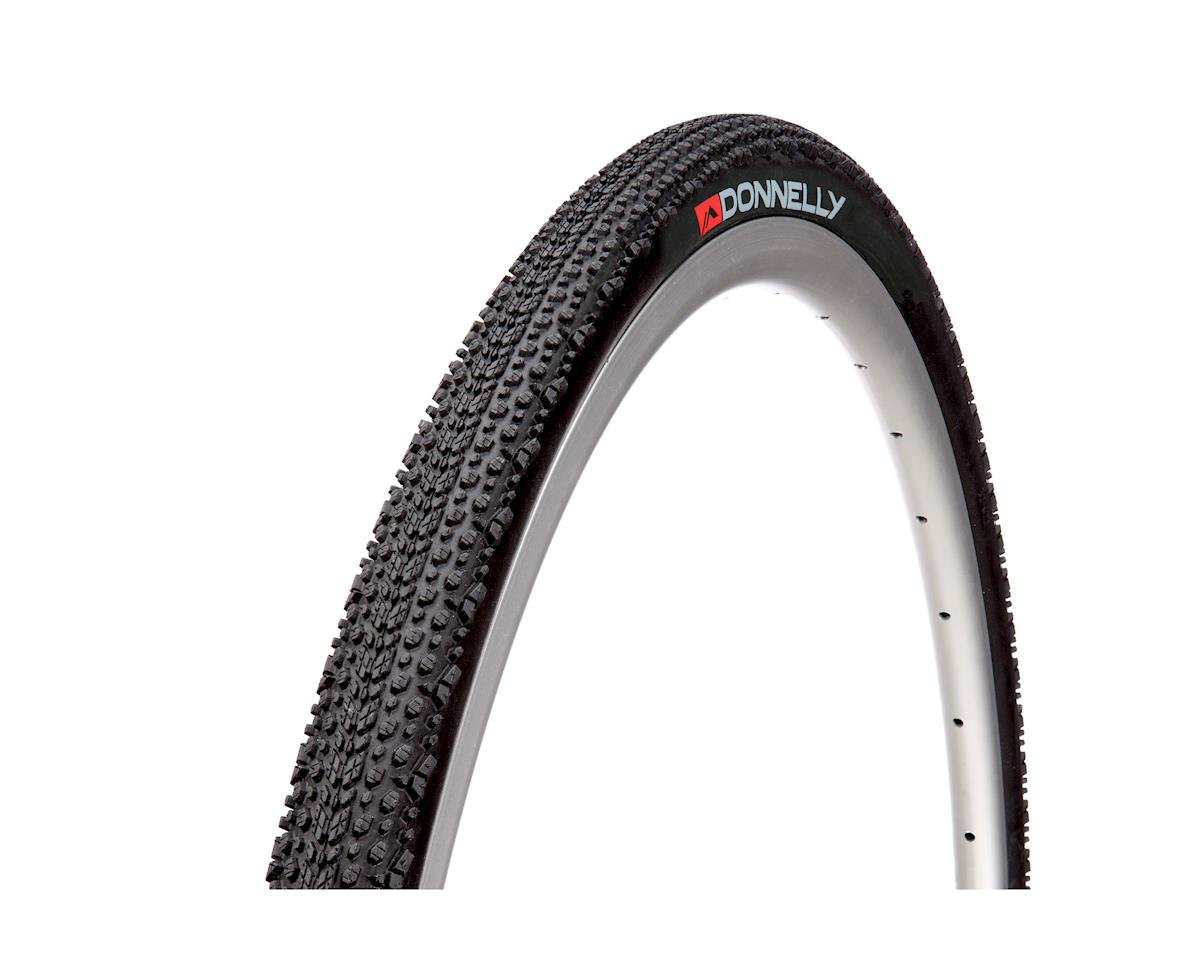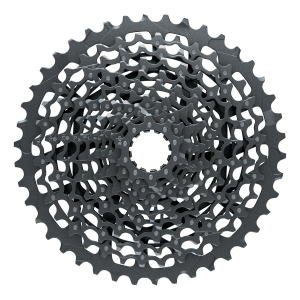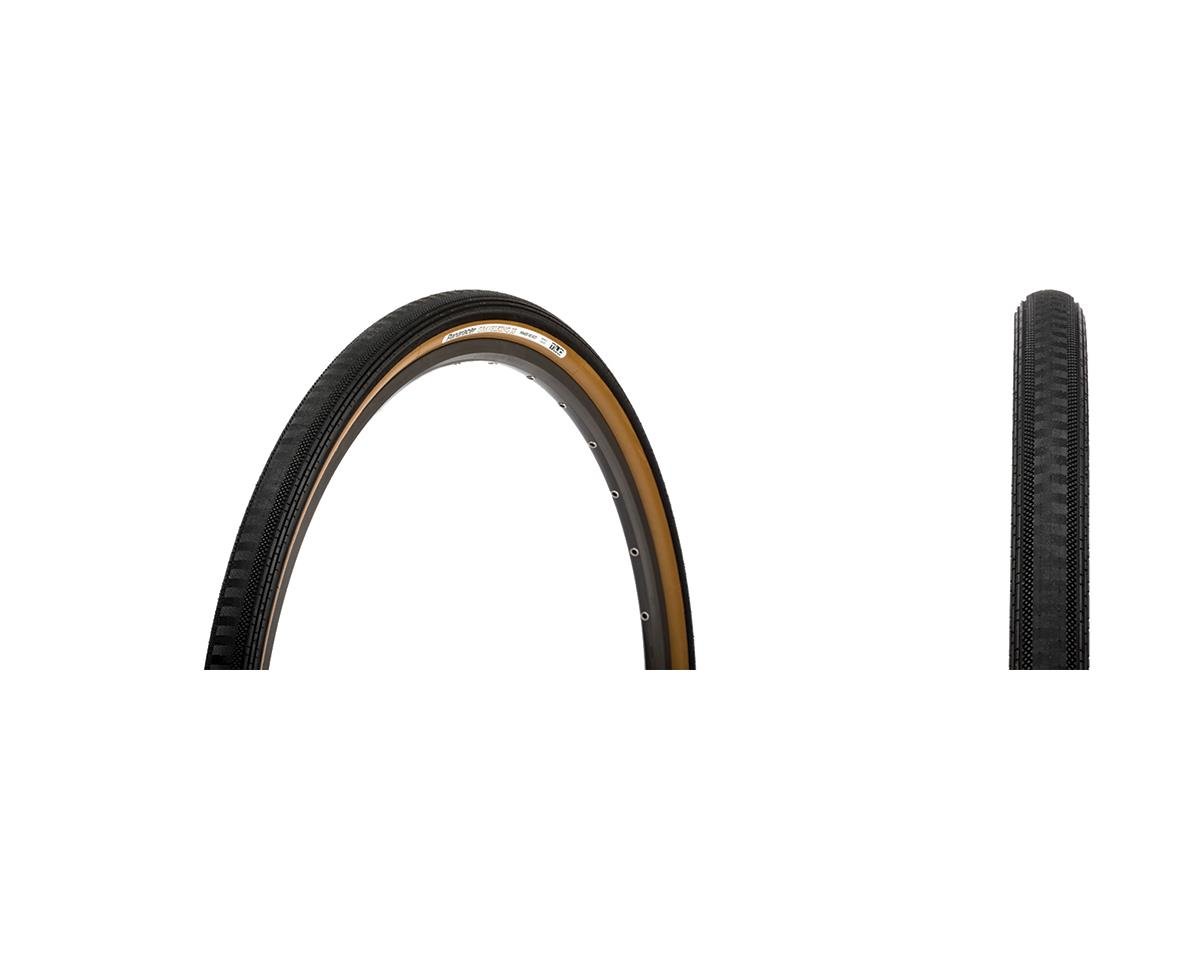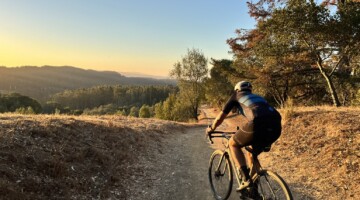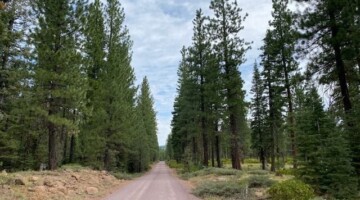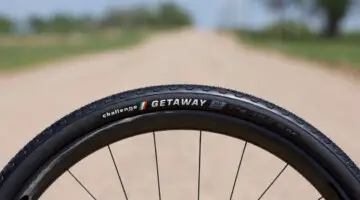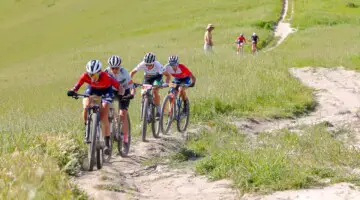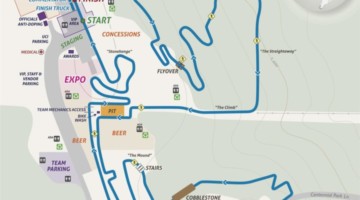The number of new gravel races popping up everywhere is amazing. But the big ones, the ones that have been around awhile and feature unique challenges, are still the events that everyone asks about. One of those is the Crusher and the Tushar. It’s a few days away, so we thought we’d check in with Burke Swindlehurst, the race’s creator and director to talk a bit about his race’s history, what riders can expect and to get some tips for those taking on the Crusher.

Crusher in the Tushar Race Director Burke Swindlehurst. ©️ Ryan Houston
Cyclocross Magazine: The Crusher in the Tushar is in its sixth year. When you started the race, did you think that gravel racing would take off the way that it has?
Burke Swindlehurst: No way. I just knew that as a rider myself, I was really craving something completely different than the run-of-the-mill events that I’d been participating in for 25+ years. And, I was eager to create something that was not only unique, but also approachable and fun for newcomers to the sport and folks like myself who have been racing bikes for a long time and were becoming a bit burned out on some of the less attractive aspects of road racing and even mountain bike racing to an extent.
“There’s part of me that’s totally floored at how much gravel riding and racing has taken off and another part of me that’s kind of like, well, of course!”
CXM: Right? For our part, we’ve noticed a proliferation of bikes and gear aimed specifically at gravel. Every show and expo we go to has more and more gravel gear. What sort of product specificity do you see each year on the start line?
BS: That’s one of the coolest things about the event is the incredibly broad spectrum of bikes you see on the start line. For the first three to four years you were seeing a pretty even distribution of cyclocross and mountain bikes along with quite a few “Frankenbikes.” But in the last few years with the explosion of the “gravel” segment, we’re obviously seeing a lot more bikes that have been designed with specificity to this style of riding and racing.
Coming to mind first would be bikes with more tire clearance than what a traditional cyclocross bike would have, allowing for tires up to 40c wide and beyond. Disc brakes, of course. I’m also starting to see tweaks in geometry like lower bottom brackets heights for stability at higher speeds and chainstays are getting shorter and shorter for a quicker feel out of the saddle when climbing.
“Also, the advent of the wide-range gears we’re seeing with ratios from 10 to 42 teeth, and even beyond, makes it feasible to build up a bike that can do almost anything really well. How cool is that?!”
CXM: Are there any constants in what the riders bring to the start line, or is it, as we suspect, still somewhat the Wild West when it comes to gravel racing?
BS: It’s definitely become much less of a “Wild West” than it was just a couple years ago, most of that due to those advances and the availability of gear to fit the job now that the cycling industry is really embracing the genre of riding. The first two or three years of the Crusher the bikes could be pretty novel and we actually had a “Most Crusher” bike award that we did for a few years. But that would be nearly impossible to do objectively now.
CXM: That would be a cool award to get! The Crusher sells out quite quick. But where does the rider cap come from? Is it simply the number of riders you’re able to take care of, are there permit limits, or some combination?
BS: The first couple of years there was a cap imposed on the event by a land agency, but now the cap is self-imposed in the interest of keeping it manageable on my end and also as an attempt to preserve a certain “vibe” I think we’ve been able to create. There’s a quote from an author I really enjoy who said “growth for the sake of growth is the ideology of the cancer cell.” When I first read that quote it really resonated with me, and I find myself coming back to that idea as a barometer for a lot things in life, this event included.
CXM: We hear lots of talk about types of gravel. Sharp, smooth, small, large. Regarding your race specifically, what sort of gravel are we talking about? How maintained or rough are the gravel sections of your race course?
BS: You know, I think we really have the proverbial “kitchen sink” when it comes to types of surfaces riders will encounter on the course. Everything from hard-pack dirt that’s nearly as smooth as asphalt to intermittent stretches of golf-ball size rocks, to ball-bearing “pea” gravel that makes it pretty much impossible to pedal out of the saddle on some of the steeper climbs. It’s also not uncommon to encounter washboards in certain areas that are severe enough to rattle tooth fillings loose!
CXM: Has the Crusher maintained the same course each year or have you had to make changes throughout the years?
BS: Yes, it’s been the same course every year since the inaugural edition in 2011. Interestingly enough, I actually had a different course planned that first year. It was about 15 miles longer with 12,500 feet of total elevation gain (the current one has just over 10,000 feet). But we received so much snowpack that year in the high elevations that one of the roads was completely washed away, so I had to run with my “Plan B” course, which is the one we have used now for all six years. In retrospect, it was a stroke of luck that we weren’t able to use the “original” course for a variety of logistical reasons. In addition, it included a long stretch of unremarkable pavement that, in hindsight, I’m glad isn’t included.
CXM: How many riders are scheduled to line up this year? How much growth has the Crusher seen since the first race?
BS: We have 600 riders registered this year, which is the same cap we have had in-place now for four years, and though the race technically hasn’t “grown” for a while now, it continues to pick-up speed in terms of how quickly it fills to capacity. In 2015 the race hit its 600 rider limit in just under a week and this year it took less than 36 hours. We started with 180 riders our first year back in 2011.
CXM: We imagine you’re quite busy on race day and the weeks leading up to the Crusher. Do you get out on the course at all and ride it all prior to the event?
BS: I try to get out on the course at least a couple of times in June to see how course conditions are shaping-up, but I don’t usually get to ride the whole length of the course until Fall after things have slowed-down a bit for me. It’s a little “treat” I give to myself and also a vivid reminder of what I put everyone through every July!
CXM: What sort of gearing would you recommend for average riders out to have a fun, if long, day on the bike? What about tires?
BS: In terms of gearing, my recommendation for the average rider is something close to a “1 to 1” low-end gear ratio to tackle the climbs. For instance, a 34-tooth front chainring with a 32 tooth cog in the rear.
“For tires, I recommend erring on the side of caution with the variability of conditions you can encounter. I like tires with robust sidewalls to prevent cuts and at least 35c in volume with a fairly aggressive tread pattern for some of the looser corners on the course and also for grip when pedaling up the steeper grades you’ll encounter to help keep the rear wheel planted.”
CXM: There was some controversy at the Dirty Kanza this year regarding rider support. What’s your take on nutrition and hydration at events like these? What are the rules for the Crusher?
BS: That’s a tricky question and I don’t think there’s truly one “right” answer.
“For my part when I began working on the Crusher, one of my primary aims was to have an event where riders could simply just show up and be supported by the event to an extent where they didn’t have to worry about arranging support outside of the what the event provides.”
This approach was to accomplish two distinct things. First, to make it easy on the racers. And second, to deter unnecessary traffic on the course from support crews, etc. that could potentially cause a safety issue for the riders. With that said, we don’t have an explicit rule about outside support when it comes to feeding or nutrition because the last thing I want to do is to have to put a focus on policing people when all I really want is for people to have a fun and safe experience in a place I love.
CXM: I’m a first-time rider at your event. Any solid advice for me?
BS: My advice first-off would be to try and pick the brain of as many people who have done the Crusher before as possible. Every person I talk to has a different perspective of the course and its various challenges. There is one thing everyone seems to agree on, though. You can never have a low enough gear for scaling the ‘Col ‘d Crush’ the KOM/QOM climb in the last 1/3rd of the race. In my humble opinion, it’s easily one of the hardest climbs you can undertake on two wheels.
I’d also highly recommend making sure you’re fully stocked-up on fluids and fuel at the aid station in the town of Junction at mile 37. The slog up Doc Springs Road shortly after, known affectionately as the ‘Sarlac Pit’ by riders, is notoriously hot and energy sapping.
CXM: Wow. Thanks for takin the time to talk with us, Burke.
BS: Thank you!













